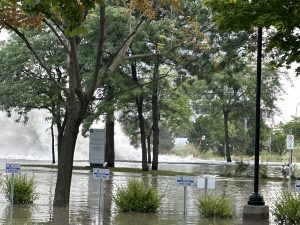Most readers of the Journal of Commerce are aware of what is needed to create sustainable and liveable cities. Priorities vary of course but there are some items certain to be on everyone’s list: Don’t build on floodplains. Give pedestrians and cyclists priority over cars. Develop efficient public transit to coax people out of their cars. Plan and build for weather that gets worse as the world warms.
But there are many more things that are possible, thanks to evolving technology. Smartphones drove the early surge in sensor development. The phone in your pocket already contains sensors. As the technology develops, it will contain more, making it possible to collect more and different information.
Now we’re in the age of Big Data that can be used (or abused) in many ways. It’s often said that the most valuable asset that Google has is the data it’s collected as we browse the web. In Europe, researchers have been busy the last three years collecting data to create a tool to guide local authorities in redeveloping or retrofitting a district. The idea is to make a district more energy efficient, to increase cost-effectiveness in the services provided and to increase the comfort for people who live or work in that district.
The European Community has financed the work, which, it is hoped, will give planners a tool they can use when planning community or district redevelopment. The tool will use masses of data in ways that are still new to most of our city fathers.
The city of Eibar in Spain wants to improve the energy efficiency of its streetlight network in three types of urban areas — commercial, residential and industrial — without compromising the comfort level of those who benefit from the service.
Each test scenario had different characteristics, like size or type of area. Researchers chose 12 representative streets and used data from sensors, surveys and historical statistical in their analysis. That analysis showed planners how to achieve their objectives.
In Kalundborg, Denmark, the goal was to reduce the energy consumption in homes by increasing awareness about using renewable energy through "green" campaigns. Planners wanted to be able to estimate expected energy savings based on those campaigns and to assess current savings using real data. Again, the project showed the value of collecting and analysing mounds of data collected from multiple data sources.
In Barcelona, Spain, the objective was to improve energy consumption of stores in shopping districts without reducing the comfort level of the shoppers. Different consumption profiles were considered — air conditioning, lighting, electrical appliances and the like. Data were collected for everything that affect, or could affect, energy consumption. Potential savings of each profile were assessed to find where different actions might be taken. That could include changing lamps to LEDs, for example, or upgrading appliances.
The key in all of this is the volume of data gathered. The rapid growth in sensor technology has enabled the collection of immense amounts of data.
Sophisticated computer algorithms slice it and dice it and spit it out in a form that is useable to town planners.
The data have all been collected now and the analysis is under way. The first result will show planners a set of key performance indicators for each of the pilot projects. Those indicators will then be used for final analysis.
At the end of the road, researchers will have something called a Platform for Decision Support that will allow city authorities and utilities to promote and choose the most suitable retrofitting actions for more sustainable and liveable cities.
Called URB-GRADE, this tool will guide decisions when upgrading a district within a city. It will mean that, more and more, Europeans will see data-driven planning decisions as they develop sustainable cities.
Korky Koroluk is a regular freelance contributor to the Journal of Commerce. Send comments or questions to editor@journalofcommerce.com.










Recent Comments
comments for this post are closed